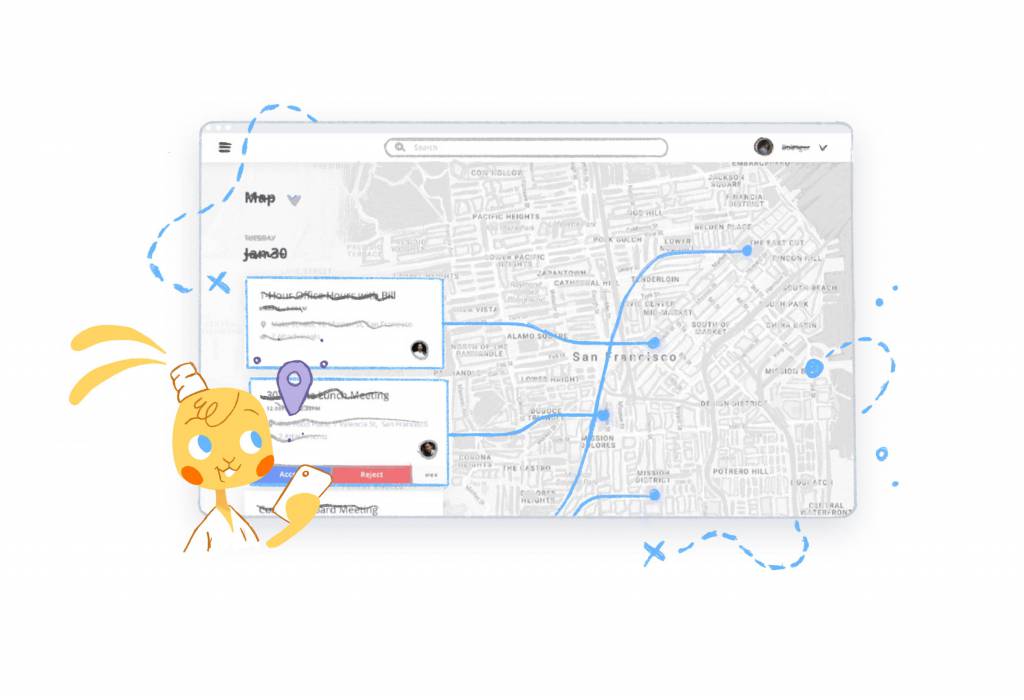

Helen Keller once said, “Alone we can do so little; together we can do so much.”
As someone who manages a team, I love this quote. You could be surrounded by ten of the most hard-working, dedicated, and talented individuals around. But if you’re not working together as team then all of those attributes will go to waste. As a result, you, your team, and business won’t succeed.
Inspire and motivate each other.
I’ve found that one of the best ways to get the most out of your team is by inspiring and motivating each of them to be as productive as possible.
You may have a couple of team members who aren’t producing as much as the rest of the team. This will mean you end-up missing deadlines or creating resentment among others because a few of the colleagues are holding them back.
Start by being productive yourself.
Improving your team’s production is no-easy task — it’s a daily challenge. But, you can use the following eight tips to make managing your team’s productivity a reality.
1. Set attainable goals.
Before starting a project, take the time to know exactly what each team member will be responsible for. Ideally, you want to play to their strengths and weaknesses. If you run a marketing agency — then you have your social media manager handle the social media marketing for a client. It wouldn’t make sense for you to have a graphic designer create and manage a social media campaign.
You also want to make sure that you set attainable goals and deadlines. If not, you’re going to overwhelm your team. Start by breaking larger projects into smaller chunks with realistic deadlines. This not only makes the project more manageable, it also gives your team a chance to track the progress of a project.
Still need help setting goals for your team? Here’s a simple five-step process for effectively doing so:
- Use the SMART system. This means that all goals need to be specific, measurable, attainable, relevant, and time-related.
- Align all goals to to each team member’s department, as well the company. This lets them see that they have a role to play in the bigger picture.
- Create an action plan, such as milestone. This is an effective way for team members track their progress.
- Set and track their progress. Use online tools like Asana, Confluence, Any.Do, Trello, or even just your Google Drive to set goals and track their progress.
- Follow up and reward. Whether a goal has been met or not, follow-up with your team using performance reviews. This gives you and your team members to see which processes worked and which didn’t. When goals have been met, reward them with a shoutout or an award or gift.
2. Clarify roles and tasks.
“In order to build an organization that runs efficiently you need to define clear roles and responsibilities for every member. There will always be some crossover but you want to avoid it the best you can,” writes Angela Ruth in a previous Calendar article.
“You need to be able to define both individual and collective roles for everyone and their teams,” adds Angela.
This can become challenging when you’re managing a large organization with various departments. In this case, you have clarify the roles of each team member within the department.
“For example a large sales organization will have multiple teams within the sales umbrella,” such as sales development representatives, and account executives. As the leader, “it’s your responsibility to make sure each individual is aware of their role as well as the team.”
3. Block out time for interruptions.
These are proven to kill focus, productivity, and motivation.
According to a RescueTime survey, a whooping 98 percent of respondents said that they were interrupted at least a few times daily. These interruptions, like colleagues popping in your office, emails, phone calls, and instant messages, may not seem like a big deal.
You know you want those headphones. Get them.
At the same time, office interruptions are unavoidable. You can use noise-blocking headphones to drown out background noise. Turn off all of your email, text, and instant messaging notifications, and put a ‘Do Not Disturb’ sign on your door. But, at some point, you and your team will have to interact with each other or respond to these communications.
Instead of fighting these interruptions throughout the day, encourage your team to manage them.
One of the most effective ways to manage interruptions is by asking your team members to block out time for them. Suggest that they check their emails or messages or pop-in at times when they know that they’re not working — like during lunch.
Ask before interrupting.
Other suggestions are encouraging your time to ask if someone is free before a face-to-face interruption and scheduling specific times to answer a complex questions.
Stop scheduling unnecessary meetings. There’s no need to drag your entire team away from their work just to ask one department head how their part of a project is coming along. Do these tasks through email, Slack, or a project management tool.
4. Make meetings more productive.
Even if you no longer schedule unnecessary meetings — there will still be times when meetings need to be penciled into you and your team’s calendars.
To ensure that the meeting isn’t a waste of time, here’s some pointers on how you can make meetings more productive:
- Keep attendance small. Again, there’s no need to make every team members attend a meeting if it doesn’t involve them. After you know who needs to be in attendance — use a calendar or scheduling to find out everyone’s availability.
- When a date and time has been set, create and send all participants a detailed agenda at least three days in advance. The agenda should include when and where the meeting will take place, how long will last, who is attending, the goals and objectives, and any relevant document attachments or references.
- Make sure that you start and end the meeting on time.
- Keep the meeting as short and concise as possible — there’s really no idea to have a meeting that lasts over a half-an-hour.
- Keep attendees engaged by giving them encouraging dialogue, being authentic, or assigning roles to make the meeting run more smoothly.
5. Embrace changes in real-time.
Thanks to tools like Calendar, Google Drive, Slack, and Trello, you and your team can share, comment, or edit documents. You can provide feedback and you’ll be aware of any changes. If a team meeting had to be cancelled at the last minute — everyone’s calendar would automatically be updated.
As a result, your team feels like they’ve been kept in the loop in regards to projects, goals, and deadlines.
6. Delegate tasks to the right people.
It’s no secret that people are more engaged, effective, and productive when they’re assigned tasks based on their strengths. This is also true when assigned tasks that they’re interested in.
Maybe the person responsible for writing blog posts for your company doesn’t have the time to compose a new article. Instead of waiting until they have availability, delegate this to a new member who enjoys writing — even if it’s not his or her responsibility.
7. Resolve conflicts ASAP.
Don’t allow any workplace conflicts to fester. If you do, you’re creating a negative and unhealthy work environment. Poor environments will hinder your team’s productivity.
When an issue arises, here are some steps that you need to take immediately from Berkeley Human Services:
- Acknowledge that a conflict does exist instead of turning a blind eye.
- Let the individuals involved express their emotions.
- Define the problem by meeting with team members separately.
- Reach a solution that everyone is content with and not deciding who is right or wrong.
- Find common areas of agreement, such as agreeing on the problem, the procedure to follow, worst fears, and the small changes that make everyone feel successful.
- Find solutions to satisfy those involved. If two team members can’t collaborate with each others, then assign them to different teams so that they don’t have to interact with each other as much.
- Schedule a follow-up meeting to see how the two parties are doing.
- Determine how you’ll handle the conflict if it goes unresolved. This could include bringing-in an outside facilitator or taking disciplinary action.
8. Don’t overdo it.
Finally, remember that less is more. There are countless tools, tips, and tactics that you can use to increase your team’s productivity.
Too many tools, tips, or tactics, your team won’t become more productive. They’ll become too overwhelmed.
Let’s say that you use separate apps for your calendar, email, instant message, and to-do-list. Your team will be spending more time juggling between all of these apps instead of cranking out work. Find a unified tool that comes with all of these features so that they’re not bouncing back and forth between apps.











John Hall
John Hall is the co-founder of Calendar a scheduling and time management app. He’s also a keynote speaker that you can book at http://www.johnhallspeaking.com.